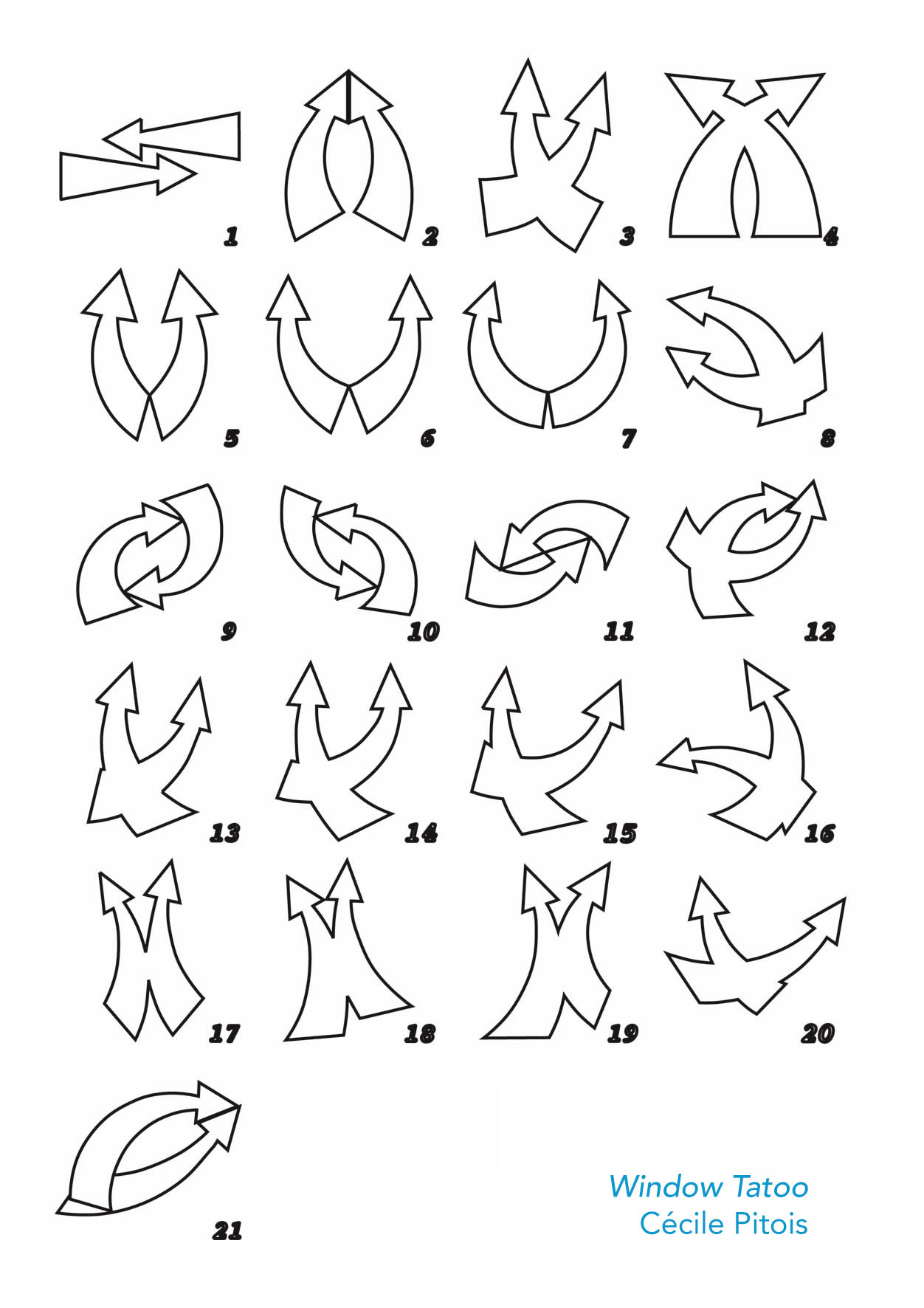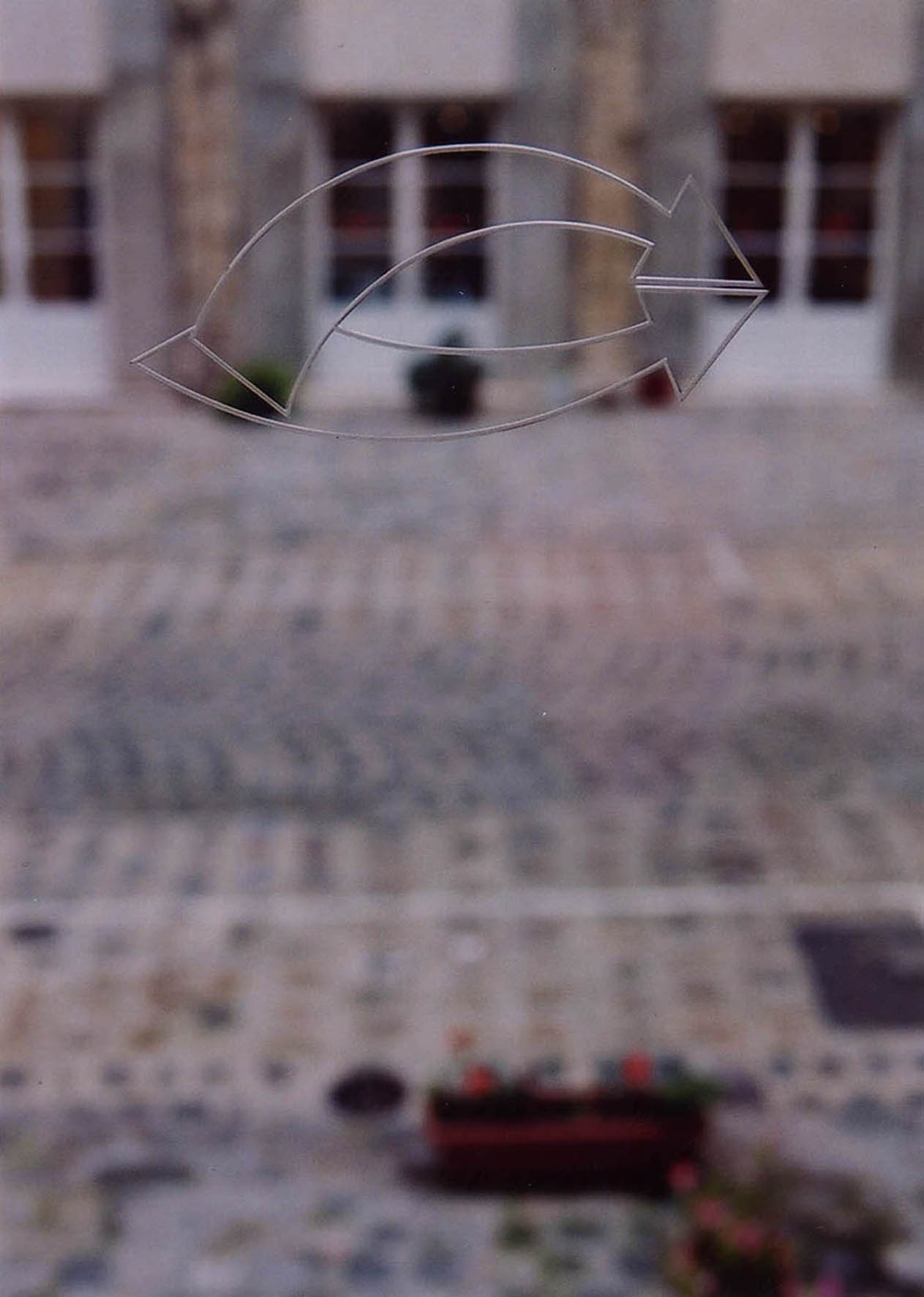Window Tatoo
Yves Hoffmann Gallery, Paris – Solo show – 2002
Private Collections
Technique : Engraved or sandblasted tattoos on glass. Choice of twenty-one shapes.
Shapes extracted from the series of preparatory drawings, Rencontre(s) and the Intuition(s) murals.

The Kamasutra, from the Sanskrit कामसूत्र Kāmasūtra, composed of काम Kama, “desire” and सूत्र sutra, “aphorism”, in other words, a treatise on desire, is an Indian text dealing with the various activities of what today we call “private life”, and was written between the 6th and 7th centuries, attributed to Vâtsyâyana. It is part of the Kâmashâstra, a collection of Indian works specializing in the arts of love and sexual practices, a scientific treatise in line with the traditional concepts of ancient India, which views sexuality as a matter of physiology and religious life, not of morality. Like all ancient Indian texts, it can also be read as an allegory of union (yoga) with the Divine.




